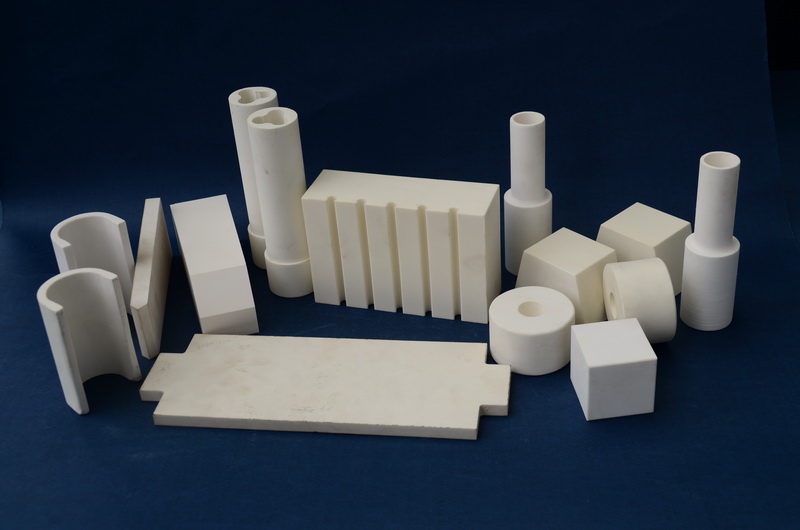Everwin Technical Ceramic Co.,Ltd

The forming methods of alumina ceramic products include dry pressure, grouting, extrusion, cold isostatic pressing, injection, casting, hot pressing and hot isostatic pressing. In recent years, pressure filtration, direct solidification molding, gel injection molding, centrifugal grouting and free solid molding have been developed. Different shapes, sizes, complex shapes and precision products require different molding methods. The forming method mainly includes:
1.Dry pressing: Alumina ceramic dry pressing technology is limited to objects with a simple shape and a thickness of more than 1 mm and a ratio of length to diameter not greater than 4:1. The molding method is uniaxial or bidirectional. Press has hydraulic type, mechanical type of two, can be semi-automatic or automatic molding. The maximum pressure of the press is 200Mpa. output up to 15 to 50 pieces per minute. Because the pressure of hydraulic press stroke is even, the height of the press is different when the powder filling is different. However, the applied pressure of mechanical press varies with the filling of powder, which leads to the difference of size shrinkage after sintering and affects the quality of the product. So dry pressure the uniform distribution of powder particles in the process is very important for die filling. Whether the filling quantity is accurate or not has a great influence on the dimensional precision control of the manufactured alumina ceramic parts. The maximum free flow effect can be obtained with powder particles larger than 60μ m, between 60 and 200 mesh, and the best pressure forming effect can be obtained.
2.Casting method: Casting is the earliest forming method used in alumina ceramics. Due to the use of gypsum mold, low cost and easy to shape large size, complex shape of the components. The key of grouting molding is the preparation of alumina slurry. Usually water as a flux medium, and then add adhesive and binder, fully ground after exhaust, and then inverted into the gypsum mold. The slurry was cured in the mold because of the adsorption of water by the capillary tube. Hollow grouting, in the mold wall adsorption slurry up to the required thickness, also need to pour out the excess slurry. In order to reduce the shrinkage of the billet, high concentration slurry should be used as far as possible.
Alumina ceramic slurry also need to add organic additives to make the slurry particle surface to form a double electric layer to make the slurry stable suspension without precipitation. It is also necessary to add ethylene alcohol, methyl cellulose, alginate and other binders, polyacrylamide, arabino gum and other dispersants, the purpose of which is to make the slurry suitable for grouting molding operation